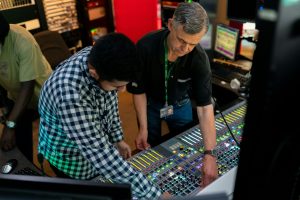Essential Features for Professional Video Editing Workstations
If you work in the video editing industry, you know how crucial it is to have a powerful and efficient workstation. Whether you’re a beginner or a seasoned professional, having the right tools can make a significant impact on the quality and speed of your work. In today’s digital age, where video content is king, it’s more important than ever to invest in a top-notch video editing workstation. But with so many options on the market, it can be overwhelming to determine what features are essential for a professional video editing workstation. In this article, we will break down the must-have features for any professional video editing setup.
Powerful Processor
When it comes to video editing, one of the most crucial components of a workstation is the processor. This is essentially the brain of your computer and is responsible for handling all the calculations and tasks required to edit videos. Without a powerful processor, you may experience lag times, crashes, and overall slow performance.
Minimum Requirement: Quad-Core Processor
Most video editing software recommends at least a quad-core processor to handle the demanding tasks of video editing. This means the processor has four independent cores that can process tasks simultaneously. For professional video editing workstations, we recommend going with a multi-core processor, such as an Intel Core i7 or i9, which can handle up to eight cores.
Best Option: Multi-Processor Workstation
If you want the ultimate processing power for your video editing workstation, consider investing in a multi-processor system. This means your computer will have two or more processors, each with multiple cores, allowing for even more tasks to be processed simultaneously. Multi-processor workstations are typically used in high-end production studios and can significantly increase the speed and efficiency of your video editing workflow.
Dedicated Graphics Card
In addition to a powerful processor, video editing also requires a high-performing graphics card. This is because video editing software relies heavily on the graphics card to render and display video footage. Without a dedicated graphics card, you may experience stuttering, poor playback, and other visual issues.
Minimum Requirement: 4GB VRAM
When choosing a graphics card for your video editing workstation, look for one with at least 4GB of VRAM (video random access memory). VRAM is dedicated memory used specifically for processing video footage, and the more you have, the better your graphics card will perform for video editing tasks.
Best Option: Pro-Grade Graphics Card
For professional video editing workstations, we recommend investing in a pro-grade graphics card, such as the NVIDIA Quadro or AMD Radeon Pro. These graphics cards are specifically designed for professional applications, including video editing, and offer better performance and stability compared to consumer-grade cards.
High-Quality Monitor
In the world of video editing, having a top-quality monitor is crucial. This is because how your footage looks on the screen can greatly impact your editing decisions. A low-quality monitor may not accurately display color, brightness, and contrast, which can negatively affect the final result of your video project.
Minimum Requirement: 1080p Resolution
The minimum resolution for a video editing monitor should be 1080p, which offers a high-definition display. This will allow you to see your footage with the most detail and make precise edits. We also recommend investing in a monitor with a wider color gamut, such as sRGB or Adobe RGB, for more accurate color representation.
Best Option: 4K Monitor
For professionals, a 4K monitor is the best option for video editing workstations. 4K refers to the resolution, which is four times the size of 1080p, providing even more detail and clarity. This is especially important for video editors who work with high-resolution footage, such as 4K or higher. Additionally, investing in a monitor with HDR (high-dynamic-range) can further enhance the quality of your video editing process.
Fast and Large Storage
Another essential feature for a professional video editing workstation is storage. With video files becoming larger and more high-resolution, it’s crucial to have fast and ample storage capacity to store and access your footage. This will also help prevent lag times when working with large files.
Minimum Requirement: Solid State Drive (SSD)
Avoid using traditional hard drives for video editing workstations, as they are relatively slow and can lead to performance issues. Instead, opt for a solid-state drive (SSD) as your primary storage device. SSDs are much faster, making them ideal for video editing, and can significantly improve your workstation’s overall speed and performance.
Best Option: RAID Array
For professionals, we recommend using a RAID (redundant array of independent disks) array for your video editing workstation. This involves connecting multiple drives together to create one large storage space. RAID arrays provide increased storage capacity, faster data transfer speeds, and the added security of having multiple backups in case of drive failure.
Final Thoughts
These are just a few of the essential features for a professional video editing workstation. Of course, there are many other factors to consider, such as RAM, audio capabilities, and connectivity options, but the ones mentioned above are the most critical for optimal performance. When putting together your video editing setup, keep in mind your specific needs and budget to find the best combination of features that will take your video editing game to the next level.











